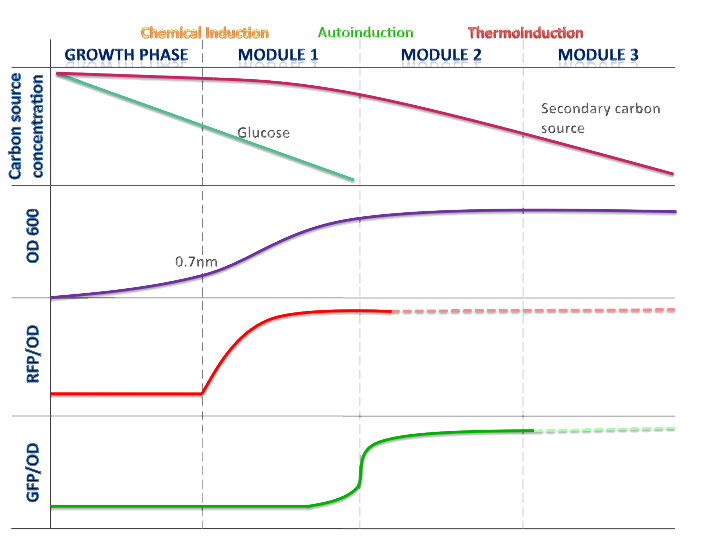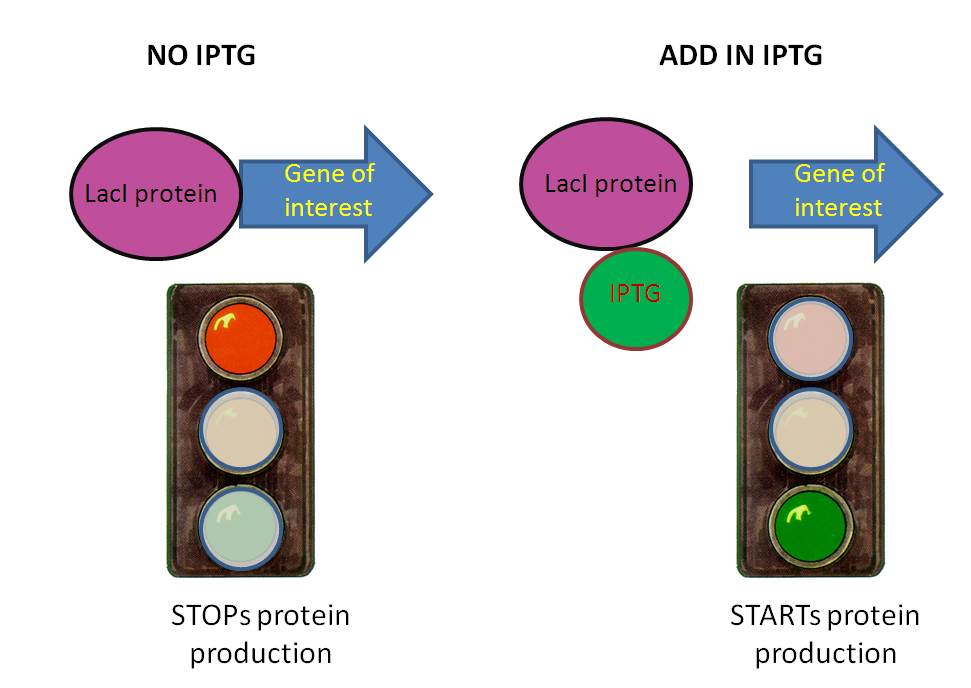Team:Imperial College London/Temporal Control
From 2009.igem.org

Contents |
Introduction
In the E.ncapsulator, temporal control is an integral part of the design. The 3 modules can only perform their function in this system if they have a temporal mechanism triggering them in a sequential manner. We have achieved this using 3 types of control:
- Chemical induction: Starts protein drug production (Module1).
- Autoinduction: Starts Encapsulation (Module 2).
- Thermoinduction: Starts Genomic Deletion. (Module 3).
Chemical induction
From the Module 1 genetic circuit, in the absence of IPTG in the system, the LacI repressor inhibits production of the protein of interest. When IPTG is added in we start the production of the drug of interest:
[For more details of the system, click here- (bits of Charles' literature review), includes info on lac operon and how we have modified it]
Autoinduction
The CRP glucose repressible promoter triggers the encapuslation phase. When levels of glucose in the medium are high, the promoter represses the start of the encapsulation phase. When the levels of glucose fall below threshold, encapsulation is triggered. Triggering and maintainance of the system relies on a primary and a secondary source, and the encapsulation is triggered at the switch point in consumption between the two sources.
Thermoinduction
c
 "
"





